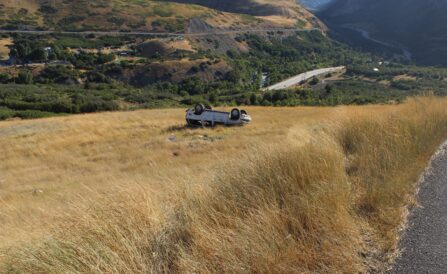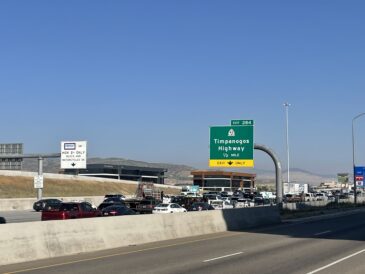Aging but energized: Many wonder of aging LDS apostles’ health
PROVO – With General Conference just weeks away, members of The Church of Jesus Christ of Latter-day Saints are preparing to hear from their priesthood leaders, apostles of the Lord they sustain as prophets, seers and revelators.
For many LDS members, conference is a time for spiritual rejuvenation, but it is also a chance to see the leaders of the church and gauge just how they are doing. Are they in good health, have they aged the last six months, are there any other surprises?
One of the reasons LDS culture has embraced this curiosity is the ages of those leaders — most of the men in leadership positions are in their 80s and 90s, but show little sign of slowing down.
These men, who are typically octogenarians and older, travel the globe, speaking, shaking hands, meeting officials, blessing the people, dedicating temples and posing for pictures.
In the eyes of the world most of them are old — very old. In fact, the average age of a member of the current First Presidency and Quorum of the Twelve Apostles is 80.
That number actually skews low thanks to young men like Elders David E. Bednar and Neil L. Andersen, who equal the playing field as the youngest apostles at 63 and 64, respectively. Take them out of the lineup and the average age of an apostle is 83.
Those looking at church leadership from outside the faith sometimes wonder why these men stay in their callings so long. Apostles have been called senile, old, provincial and out of touch with today’s world.
Others have questioned why aging prophets in the LDS Church don’t retire or resign. They point to other religious leaders, like Pope Benedict XI, who resigned in February 2013 at age 85 as head of the Catholic Church, citing health and age reasons. It was the first time in 600 years that a pope had resigned. Only two others, Pope Gregory XII in 1415 and Pope Celestine V in 1294, had previously taken that step.
Retiring or resigning is not the way it’s done with the top levels of LDS leadership. When an apostle of the Lord is called, it is for that man’s lifetime, in sickness and in health.
“The ways of the Lord are different from the ways of man,” said Elder Russell M. Nelson during the October 2014 General Conference. “Man’s ways remove people from office or business when they grow old or become disabled. But man’s ways are not and never will be the Lord’s ways.
“The apostle with the longest seniority in the office of apostle presides. That system of seniority will usually bring older men to the office of President of the Church. It provides continuity, seasoned maturity, experience, and extensive preparation, as guided by the Lord.”
Nelson said the Lord has put into place a remarkable system of governance that provides redundancy and backup.
“That system provides for prophetic leadership even when the inevitable illnesses and incapacities may come with advancing age,” Nelson said. “Counterbalances and safeguards abound so that no one can ever lead the church astray. Senior leaders are constantly being tutored such that one day they are ready to sit in the highest councils.”
President Thomas S. Monson is the first general authority since President Joseph Fielding Smith to serve for a half-century as an apostle. He has spent most of his life in full-time church service — first as a member of the Quorum of the Twelve, then as a counselor to three presidents of the church, and for the past six years as president of the church himself. He will continue to serve until the Lord calls him home.
At the time of President Gordon B. Hinckley’s death in 2008, the church reported that “even at the age of 97, he was a tireless leader who always put in a full day at the office and traveled extensively around the world to mix with Church members, now numbering 13 million in 171 nations.”
Even in his 90s, Hinckley was a popular interview subject with journalists, appearing on 60 Minutes with Mike Wallace and on CNN’s Larry King Live, as well as being quoted and featured in hundreds of newspapers and magazines throughout the years.
Elder David B. Haight, a member of the Quorum of the Twelve, died in July 2004 at 97. At the time he was the oldest living apostle. His death came just 10 days after the passing of Elder Neal A. Maxwell, who died after a lengthy battle with leukemia. He was 78.
These leaders go beyond what is expected of the common man at their age. In fact, the average life expectancy for a white male is 78.5 years.
In July 2014, Bednar was invited to throw out the first pitch at the annual “Mormon Night” at Dodger Stadium in Los Angeles. He kept the ongoing tradition of other, older general authorities who have shown their athletic prowess by throwing out the first pitch during Mormon Night in previous years. They include President Dieter F. Uchtdorf, second counselor in the First Presidency, and Elder Jeffery R. Holland and Elder Quentin L. Cook, both of the Quorum of the Twelve.
So just how old are the church leaders? Monson is 88. His counselors in the First Presidency are Henry B. Eyring, 82, and Uchtdorf, 74.
The Quorum of Twelve of Apostles, by seniority, includes: Boyd K. Packer, 90; L. Tom Perry, 92; Russell M. Nelson, 90; Dallin H. Oaks, 83; M. Russell Ballard, 88; Richard G. Scott; 86; Robert D. Hales, 83; Holland, 74; Bednar, 63; Cook, 75; D. Todd Christofferson, 70; and Neil L. Andersen, 64.
While the apostles aren’t generally available to talk about their longevity, many have said in conference talks, testimonies and interviews that it is because the Lord sustains them, and needs them in their current capacity, that they are able to do His work.
If you’re going by odds or averages, just the ages of these men indicate there could be a large turnover in the governing body of the LDS Church within the next five years.
Still, they aren’t the oldest prophets. It appears that throughout history God seasons and preserves his servants to serve in their old age.
Biblically, the oldest prophet was Methuselah. He died at age 969. Noah was 950 and Adam was 930. After the great flood things seem to have changed, with Abraham living only to a mere 175. Isaac was 180, and Jacob died at 147. Moses was 120.
On the younger side was King David at 70 and Solomon at 80.
So how do the modern LDS prophets fare in the age and preservation category? Incredibly well — but for the church’s first prophet, Joseph Smith, who was martyred at age 38.
The remainder of the prophets died by natural causes. Brigham Young died at 76; John Taylor, 70; Wilford Woodruff, 91; Lorenzo Snow, 80; Joseph F. Smith, 80; Heber J. Grant, 88; George Albert Smith, 81; David O. McKay, 96; Joseph Fielding Smith, 95; Harold B. Lee, 74; Spencer W. Kimball, 90; Ezra Taft Benson, 94; Howard W. Hunter, 87; and Gordon B. Hinckley, 97.
Averaging those ages tells us that modern church presidents live to be a little more than 85 years old.



